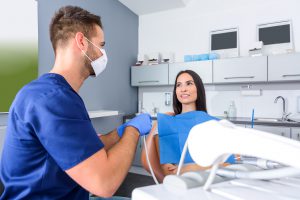
Dental professionals are often uncomfortable approaching patients on topics that are unfamiliar or that feel outside the realm of “traditional” dentistry. One such topic is Human papillomavirus (HPV). As a hygienist of 40 plus years, I can tell you this topic never came up in my education. Several years ago, I had to educate myself about this near epidemic viral infection. Most importantly, I had to step out of my comfort zone to find a way to share this crucial knowledge with my patients. As you begin to learn about oral HPV, carefully consider your sources and remember there is a wealth of information (and misinformation) readily available to clinicians and patients on the topic of HPV – oral and otherwise. My primary sources of information were the Centers for Disease Control, The Oral Cancer Foundation, and Dr. Ron McGlennen at OralDNA® Labs. Here is a summary of the facts I gathered and that I shared most often with my patients.
- HPV infections are typically associated with cervical cancer; however, these same types of HPV are a risk factor for some oropharyngeal cancers.1
- According to the Centers for Disease Control (CDC), at least 80 million people in the United States are infected with HPV and there are approximately 14 million new cases each year.2
- According to the National Cancer Institute (NCI), HPV is considered to be the leading cause of oropharyngeal cancers – responsible for approximately 70% of oropharyngeal cancers.3
- There are more than 100 “numbered” HPV types. Within these types they are classified as low-risk HPV types, high-risk HPV types, and some are unknown-risk HPV types
- Low-risk HPV types such as 6 and 11 are typically associated with benign warts or papillomas.4
- High-risk HPV types such as 16, 18, 31, 33, and 35 are known for their strong association with cervical cancer.4
- Types 16 and 18 (both high-risk types) are also strongly associated with squamous cell carcinomas of the head and neck region.4
- High-risk type HPV infection combined with time and other factors (ex: weakened immune system) is required for HPV to initiate malignant transformation of cells.4
- Most HPV infections (9 out of 10) go away by themselves within two years.2 Knowing your status is a key factor in determining if you have a persistent infection.
- More males than females will develop oropharyngeal cancers.5
- HPV is passed from person to person through skin to skin contact, primarily sexual contact.6
- How you may have acquired oral HPV isn’t the concern, I believe that what matters more is knowing if you have an active oral HPV infection.
- There is a very simple, 30-second swish & gargle, test to screen for oral HPV infections.7
Armed with the above data I felt more confident speaking about oral HPV risk to each patient I saw. I offered the test option to all patients over 18 years of age and spoke to the parents of patients who were younger than 18. Overall, the response I received from my patients was very positive. In my opinion, in order to provide a higher quality of care we must step out of our comfort zones and speak with our patients about oral HPV risk – our patient’s health depends on it.
References:
- https://www.cdc.gov/std/hpv/stdfact-hpv.htm
- https://www.cdc.gov/hpv/parents/questions-answers.html
- https://www.cancer.gov/about-cancer/causes-prevention/risk/infectious-agents/hpv-fact-sheet#q2
- https://www.oraldna.com/Resources/OralHPVWhitePaper_4_15_14.pdf
- https://www.cancer.org/cancer/oral-cavity-and-oropharyngeal-cancer/about/key-statistics.html
- https://www.cdc.gov/hpv/parents/whatishpv.html
- oraldna.com
For more information on how to become an OralDNA Provider – scan HERE: 
- Consumer-Friendly Lab Reports - October 6, 2023
- Microbiology Terminology - March 24, 2023
- Microbiology 101 - January 3, 2020
